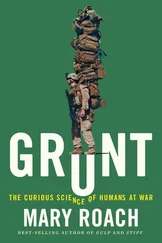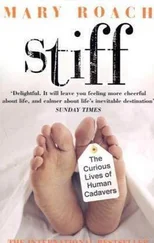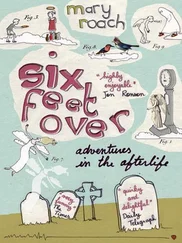By odd coincidence, I went to a noontime lecture today that addressed this issue. (“Turkey Vultures: Fact or Fiction?”) The lecturer had brought along his pet turkey vulture, Friendly, who smelled even worse than one might imagine a turkey vulture to smell. This was, he said, because Friendly had become sick in the car on the ride over and vomited. Earlier he told us that turkey vultures will vomit at you if you harass them. I was in the second row, and have no trouble believing that turkey vulture vomit makes a powerful deterrent. Unless you are a coyote. Fact: The coyote considers turkey vulture vomitus a delicacy, and will harass the birds simply to get a snack.
Merrick scholars disagree as to whether it was suicide or accident, but they do agree on his true first name, which was in fact Joseph, not John. The London production, as I seem to recall, used the more widely known “John,” perhaps to avoid amending the program with a footnote, as I’m having to do. While I have you here, I’ll tell you that David Bowie played Merrick. He wore no makeup or prosthetics and almost no clothes. He held himself crooked, just as Merrick had been, and broke your heart.
Thus the best way to survive in a falling elevator is to lie down on your back. Sitting is bad but better than standing, because buttocks are nature’s safety foam. Muscle and fat are compressible; they help absorb the G forces of the impact. As for jumping up in the air just before the elevator hits bottom, it only delays the inevitable. Plus, then you may be squatting when you hit. In a 1960 Civil Aeromedical Research Institute study, squatting on a drop platform caused “severe knee pain” at relatively low G forces. “Apparently the flexor muscles…acted as a fulcrum to pry open the knee joint,” the researchers noted with interest and no apparent remorse.
Whitson and her crewmates, much to their surprise, did have help. Not long after touchdown, she felt someone pull her from the capsule. “I was like, ‘Cool, the search-and-rescue guys are here already.’ They laid me on the ground near the cesium altimeter. Which seemed odd, because we were always told to stay away from the cesium altimeter. So I start looking at the SAR guys…. One of them, literally, was wearing what looked like a burlap sack sewn into pants. They were Kazakh locals.” One spoke some Russian. He asked Whitson’s crewmate Yuri Malenchenko, “Where did this boat come from?” (The fire had consumed the parachutes.) “Yuri’s like, ‘No, this is a spacecraft. We were up in space.’ And the guy says, ‘ Nu, ladna, ’ which is kind of like ‘Fine, whatever.’”
No one is excluded from the astronaut corps based on penis size. It is assumed that a man will fit one of the three sizes available in the condom-style urine collection device hose attachment inside the EVA suit. To avoid mishaps caused by embarrassed astronauts opting for L when they are really S, there is no S. “There is L, XL, and XXL,” says Hamilton Sundstrand suit engineer Tom Chase. This was not the case during Apollo. Among the 106 items left on the moon’s surface by Neil Armstrong and Buzz Aldrin are four urine collection assemblies—two large and two small. Who wore which remains a matter of conjecture.
And a diaper. Though the lack of a diaper doesn’t mean race-car drivers don’t pee in their suits. “People do it all the time,” reported Danica Patrick in an interview in Women’s Health . Except Danica. “I tried last year.” She explains that this was during, appropriately enough, a yellow flag (the signal to slow down and follow the pace car, usually because of an accident). “I was like, ‘…Just do it.’” No Nike sponsorship for Danica!
How do you tell when a cadaver is done defrosting? Bolte sticks a temperature transducer down the trachea. When the internal temperature passes 60 degrees, it’s ready. Lacking that, a “thermometer up the rectum” will give you a good idea, as will moving the arms and legs to see if the joints move freely. Two to three days (in a refrigerator, please) usually does it.
Beware the hard things in between. The April 1995 issue of the Journal of Trauma includes a case report of a man whose pipe was between his BMW’s airbag and his face when the bag deployed. A piece of the stem shot into his eye, resulting in “a ruptured globe.” The author, a Swiss physician, has a keen globe for detail, noting that “there was tobacco all over the floor” and that the injury was similar to those seen “after a thrust of a pointed cow horn.” The paper concludes with an exhortation to “behave appropriately”—no “drinking from cups,…holding articles on the lap, or wearing spectacles while driving.” Not to thrust too pointed a cow horn, but wearing one’s eyeglasses while driving surely prevents more injuries than it causes.
How much does it move? Enough that you can sometimes feel it. In one Apollo-era study of sudden deceleration (stopping fast), five out of twenty-four subjects complained of what the researcher called “abdominal visceral displacement sensation.”
Does this sound gentle? It is not. Recall Javier Bardem in No Country for Old Men . If you missed the film, think of pork workers described in a MedPage Today article as using jolts of compressed air to force pig brains out of heads. “This ‘emulsifies’ the brain tissue,” explained a source.
And in the paper “Voluntary Tolerance of the Human to Impact Accelerations of the Head.” Eleven subjects, at least one of them dressed in a suit and tie, received blows to the head with 9-and 13-pound pendulums. As the authors put it: “Considerable distortion of the face was observed as the bony structure of the head was accelerated away from the softer portions.” We owe these men a debt of thanks. In the early investigations of head impact, a cadaver was of limited help. You couldn’t ask him to count backward by sevens or name the president, and you’d never know what sort of headache he had.
Here’s another possible reason NASA avoids cadaver research: astronauts. “I floated into a sleep restraint and extended my arms through the armholes then ducked my head into the bag,” wrote Mullane. “Pepe and Dave taped the skull on top…They silently floated the bag to the flight deck and maneuvered me behind John Casper, who was engaged at an instrument panel. When he turned to find the creature in his face with arms waving, it scared the bejesus out of him. Later, we clamped [it] on the toilet.” If you read just one astronaut memoir in your life, make it Mullane’s.
A comma would have been good. “Astrochimp Ham” is perilously suggestive of a cut of meat made from a dead research animal. It wouldn’t be a first. In a stunning public relations lapse known as Project Barbecue, pigs who died on Air Force crash sleds in a 1952 test of seatbelt safety were served in the mess hall later that night.
Piloting could be done by the astronauts, via directional thrusters, but it didn’t need to be. The capsule could be flown on autopilot and operated from the ground in, to quote astronaut Mike Collins, “chimp mode.”
The simulated astronaut is a tradition dating all the way back to the Sputnik era, when the Soviets flew test runs with a mannequin they called Ivan Ivanovich and, sometimes, recordings to test voice transmissions. A tape of a person singing was originally proposed, so as to make clear to Western listening posts that it wasn’t a spy. Someone pointed out that this would generate rumors of a cosmonaut spy gone mad. The recording was switched to choral voices, as even the most gullible Western intelligence man knew you couldn’t fit a choir in a Korabl-Sputnik satellite. A voice reading a Russian soup recipe was thrown in for good measure. The simulated astronaut named Enos orbited with a voice-check tape recording that said, “Cap com, this astro is. Am on the window and the view is great…,” prompting President Kennedy to announce to the world, “The chimp took off at 10:08. He reported that everything is perfect and working well.” No doubt generating KGB rumors of a U.S. president gone mad.
Читать дальше












